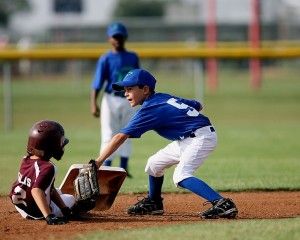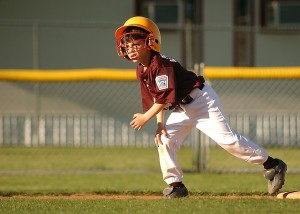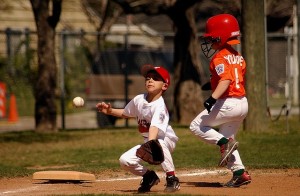How to Keep Your Kids Safe During Little League
Kids all over the country are participating in spring little league baseball and softball leagues. It’s a pleasant way to get some exercise, enjoy the weather and emulate their favorite baseball players.
Although baseball is a relatively safe sport compared to football or even soccer, injuries can and do happen. A stray bat or ball can cause injury and pain, as can a dramatic slide into a base.
Let your kids enjoy little league with their friends. Just make sure you and your child take adequate safety precautions, so a preventable injury doesn’t ruin all the fun.
Wear Proper Protective Gear
Baseball doesn’t require too much protective gear, but it’s important to use the few items you need. Specific requirements will vary through the leagues and age groups, but certain things, like batting helmets, are a must throughout any baseball career.
A player should wear a batting helmet whenever at-bat, preparing to bat or while running the bases. These are the times a player could get hit with the ball or even a bat, so you need to make sure your child knows to never remove his or her helmet during a game. Some batting helmets come with chin straps or eye or face guards. You also should never alter or remove these.
Make sure every player has their own helmet. Sharing hats and helmets can spread lice from one player to another. That will ruin the game and put your family in an uncomfortable situation for a few weeks.
Catchers, especially, are in danger of getting hit with a ball, as they are in the ball’s path on every pitch. Catchers need a facemask on their helmet, a full chest protector, shin guards, a catcher’s mitt and a cup or athletic supporter. Cover everything an incoming ball could run into.
Players can add layers of protection depending on their league suggestions or rules. Athletic cups are a good idea, although some kids find them embarrassing or have difficulty running while wearing them.
Sliding pants can save skinned knees. Batting gloves can keep the hands from getting sore, and shin and foot guards can prevent injuries from the ball, especially when it falls straight down to their feet.
Mouth guards are a good idea, too. In the event of a collision with another player, a mouth guard can keep teeth from smashing together and potentially breaking. A chipped tooth seems like every parent’s worst nightmare, but there are plenty of recovery options available if it does happen. A mouth guard will also be the best defense in the event of a ball strike to the face, and could save you a trip to an emergency dentist.
Practice Safe Play
They have seen the pros do it, and they have seen their peers do it. However, teach your kids never to throw their bat after hitting or missing a ball. There’s no need to risk ruining a game by injuring someone with an errant bat.
Also, teach kids not to throw a ball to someone if they don’t have eye contact with them. A thrown ball has enough power to hurt or injure someone. If they don’t know it’s coming, they may be defenseless against it.
Keep your eye on the game. Players may hit or throw the ball in many different directions throughout the course of play. Listen for “Heads up,” which people yell when a ball is heading in an unplanned direction and could hurt someone.
Don’t slide unnecessarily. Kids love the dramatics of sliding into home base to make a big play. However, doing so can be dangerous to anyone nearby. A body slamming full speed into another can cause bruises, cuts, head injuries and broken bones. Some coaches may encourage this behavior, which is why it’s even more important for you to teach your kids how dangerous it can be.
Don’t Overdo It
Sadly, you don’t have to get hit with a bat or a ball or smash into another player to get hurt. Lots of kids sustain overuse injuries, particularly pitchers. Repeatedly throwing a baseball can cause muscle fatigue and damage to the tendons and ligaments in the shoulders and elbows — which can lead to chronic pain and degenerative injuries.
Kids need to stretch out before playing, and they need to learn to throw correctly. Kids should also listen to their bodies. If they are in pain, they should take a break. Many leagues follow pitch count restrictions established by the American Sports Medical Institutes. These guidelines dictate how many pitches one player can throw in a game or season, based on age ranges.
Prepare for Injuries
Just like you bring water, sports drinks and snacks to a game, make sure to designate someone as a first aid volunteer. Their priority is to prepare a first-aid kit. Make sure your kit includes ice packs, bandages, sports tape, gauze wrap, scissors and finger splints.
It also helps to have moleskin to cover open rash-like wounds and antibiotic ointment to help prevent infection. Tweezers for splinters, eye wash and an over-the-counter pain reliever would also be good items to include. You can’t prepare for everything, but you should have a general idea of what injuries could occur.
You want to have fun, but you also want your children to be safe. Injuries occur all too frequently at all levels of baseball and softball. Make sure to inform and protect your kids so they can enjoy their baseball or softball season without suffering an easily preventable injury.



Very nice and interesting. Comprehensive article